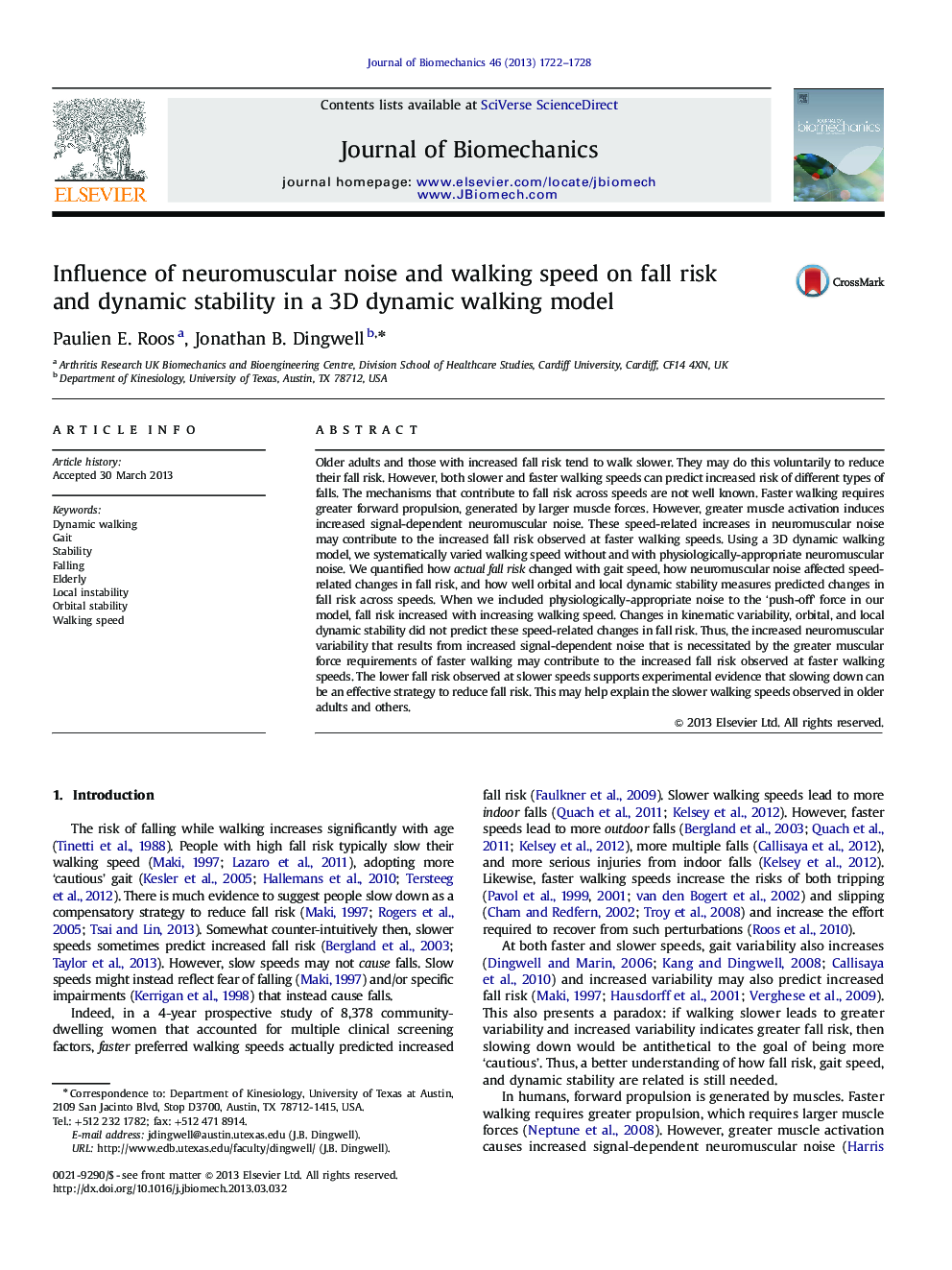| Article ID | Journal | Published Year | Pages | File Type |
|---|---|---|---|---|
| 10431905 | Journal of Biomechanics | 2013 | 7 Pages |
Abstract
Older adults and those with increased fall risk tend to walk slower. They may do this voluntarily to reduce their fall risk. However, both slower and faster walking speeds can predict increased risk of different types of falls. The mechanisms that contribute to fall risk across speeds are not well known. Faster walking requires greater forward propulsion, generated by larger muscle forces. However, greater muscle activation induces increased signal-dependent neuromuscular noise. These speed-related increases in neuromuscular noise may contribute to the increased fall risk observed at faster walking speeds. Using a 3D dynamic walking model, we systematically varied walking speed without and with physiologically-appropriate neuromuscular noise. We quantified how actual fall risk changed with gait speed, how neuromuscular noise affected speed-related changes in fall risk, and how well orbital and local dynamic stability measures predicted changes in fall risk across speeds. When we included physiologically-appropriate noise to the 'push-off' force in our model, fall risk increased with increasing walking speed. Changes in kinematic variability, orbital, and local dynamic stability did not predict these speed-related changes in fall risk. Thus, the increased neuromuscular variability that results from increased signal-dependent noise that is necessitated by the greater muscular force requirements of faster walking may contribute to the increased fall risk observed at faster walking speeds. The lower fall risk observed at slower speeds supports experimental evidence that slowing down can be an effective strategy to reduce fall risk. This may help explain the slower walking speeds observed in older adults and others.
Related Topics
Physical Sciences and Engineering
Engineering
Biomedical Engineering
Authors
Paulien E. Roos, Jonathan B. Dingwell,
